Special feature 1
Nichimo is pursuing the continuous creation of value through its business operations in the fishing and marine products industries, and to passing down a better natural and marine environment to the next generation. To this end, the Company is engaging in R&D of environmentally friendly marine materials, including the development of items made with biomass materials that are biodegradable in the natural environment.
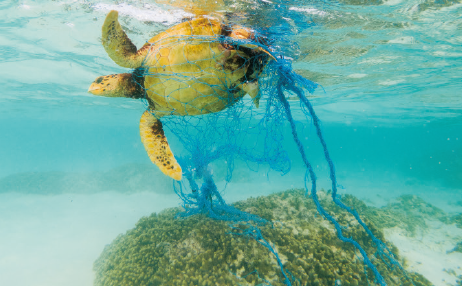
A sea turtle tangled in a net
Issue 1Ever-increasing marine waste
The problem of marine waste originating from plastics is growing worse in oceans around the world. Among these, significant damage is caused by issues such as ghost fishing, which refers to marine creatures becoming entangled and killed by fishing nets and gear that have been illegally dumped or washed away in heavy weather.
The abandoned nets and gear also obstruct vessel travel, causing economic loss by compromising maneuverability and delaying schedules.
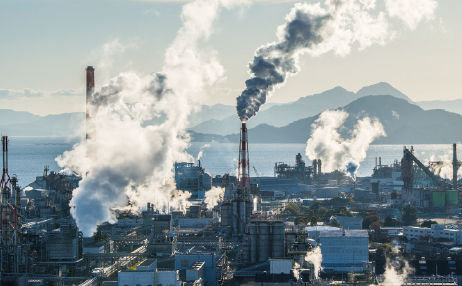
Issue 2Reducing CO2 emissions to fight rising ocean temperatures and help realize a decarbonized society
Emissions of greenhouse gases, particularly CO2, are said to be a cause of global warming and rising ocean temperatures, and global-scale emissions reductions are needed.
Initiatives to reduce CO2 emissions are needed to realize carbon neutrality by 2050.
01 The Marine Plastic Pollution Issue
Initiatives of Nichimo 1Efforts to combat marine plastic
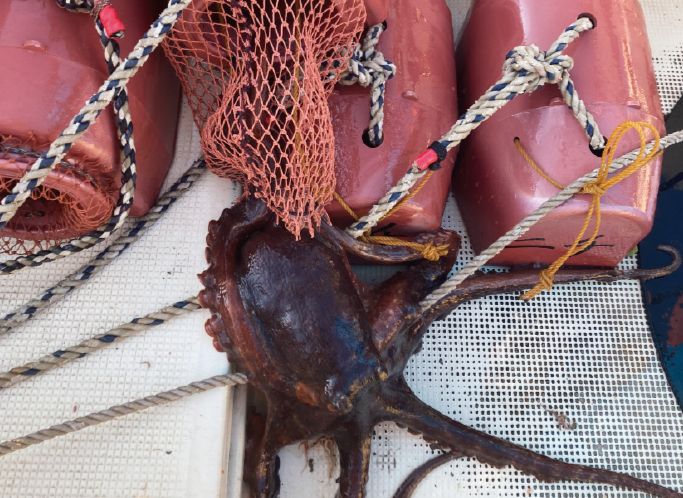
Octopus pots made with biomass and biodegradable materials
To resolve these issues, the Company has been engaged in development and sales of marine materials (fishing nets, ropes, squid hooks, octopus pots, etc.) made with biomass and biodegradable materials.

Octopus pots made with biomass and biodegradable materials
R&D and sales of marine materials made with biomass and biodegradable materials
These marine materials have an extremely low decrease in performance in use (in the sea), and if they are damaged or washed into the ocean due to heavy weather, they simply sink to the bottom of the ocean and decompose through the action of bacteria.
Furthermore, due to the characteristics of biomass, they can help to alleviate the problem of microplastics, which has emerged in recent years, thereby reducing environmental impact. They can also help to minimize the environmental impact of ghost fishing due to their biodegradability.
For example, we are making progress on actual introduction of octopus pots made from biomass and biodegradable materials, and we also expect to see beneficial side effects, with higher catch capability observed compared to conventional pots made from petroleum-based materials.
Our biomass fishing nets and ropes made with biodegradable materials are also introduced to other fields such as marine surveys, marine civil engineering and disaster countermeasures and applied as alternative construction materials of shorelines protection gabions and offshore wind turbines foundations.
In addition, sandbags made with biomass and biodegradable materials have been registered on the Net Technology Information System (NETIS), a system for utilizing new technologies in public works projects of the Ministry of Land, Infrastructure, Transport and Tourism, and have been used in various public works projects.
Going forward, the Company will supply the materials not only for the fishing industry domain, but also for the marine civil engineering and land-based civil engineering domains, promoting usage of the technologies in line with the needs of construction companies and governments, and opening new markets.
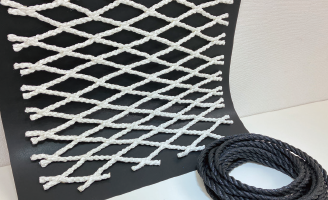
Biomass fishing nets
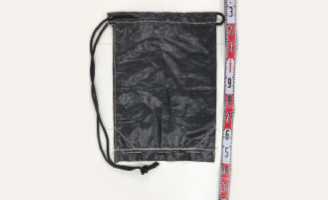
Biodegradable sandbags
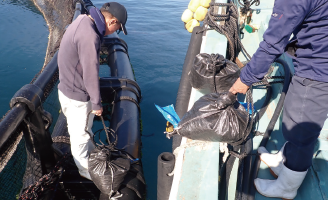
Demonstration testing of a sandbag on the fishing industry front line
02 Contribution to Seaweed Bed Formation
Initiatives of Nichimo 2Contribution to algae bed formation for the creation of blue carbon
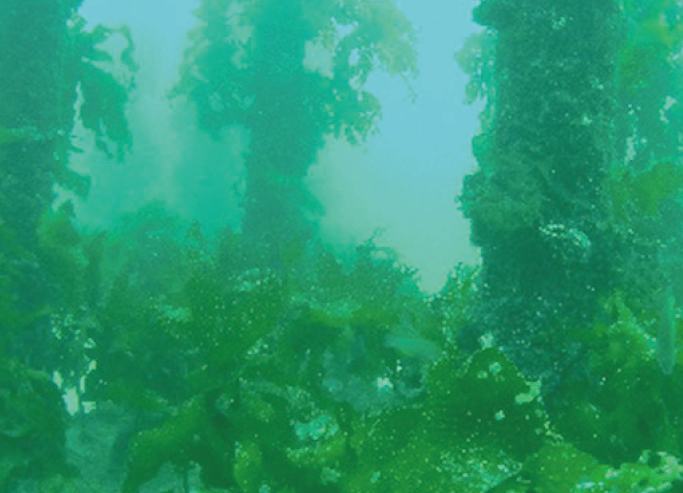
Reducing CO2 emissions from social activities are a topic of much discussion as a key priority for realizing a decarbonized society. One measure for achieving this is carbon absorption through the creation of blue carbon.
Blue carbon is carbon derived from CO2 absorbed from the atmosphere into the ocean through the action of marine organisms. By providing marine materials made from biomass and biodegradable materials, such as biomass fishing nets and robes developed by the Company, for use as substrates for algae beds for cultivating algae, we have been contributing to the realization of a decarbonized society.

Superior algae seeding and cultivation characteristics of biomass rope developed by the Company
The performance of biomass rope developed by the Company as a substrate for algae (sargussum horneri) and the growth of that algae was compared with a conventional synthetic fiber substrate (polypropylene). The biomass rope showed better seeding of the algae and four to five times greater growth after 33 days.
These results demonstrate the superior performance of algae bed formation using biomass rope for cultivating seaweed and creating blue carbon.
Our next step is to move forward with commercializing algae bed formation materials, seaweed nets, and wakame and kelp aquaculture ropes.
Blue carbon will be a significant contributor to achieve a decarbonized society. We will take the initiative in promoting the creation of blue carbon around the world.
Comparison of growth after 33 days between biomass rope and petroleum-based rope
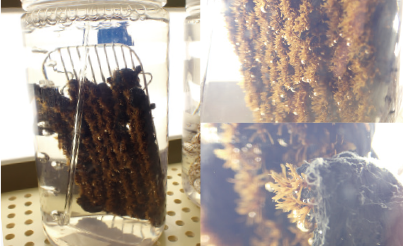
Nichimo biomass rope
Collaboration: Okabe Co., Ltd.
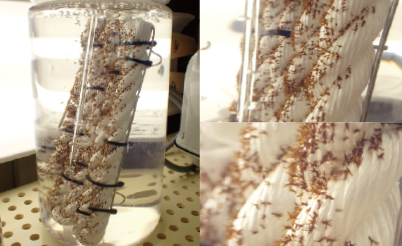
Petroleum-based rope
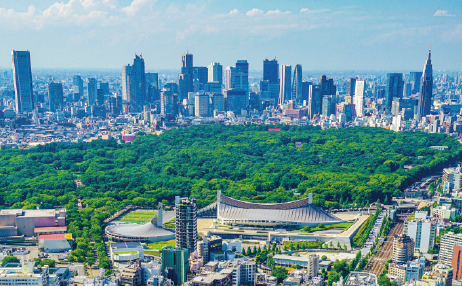
Contribution to reduction of CO2 emissions during manufacture and disposal of materials
The main raw material in Nichimo’s biomass and biodegradable materials is corn-derived polylactic acid, or PLA.
Marine materials made using PLA can reduce the combined amount of CO2 emissions for manufacture and disposal by 60% compared to conventional fishing nets and fishing gear made from petroleum-based material.
The Company will continue using the knowledge and know-how it has amassed over many years to develop and commercialize marine materials made with biomass and biodegradable materials.
